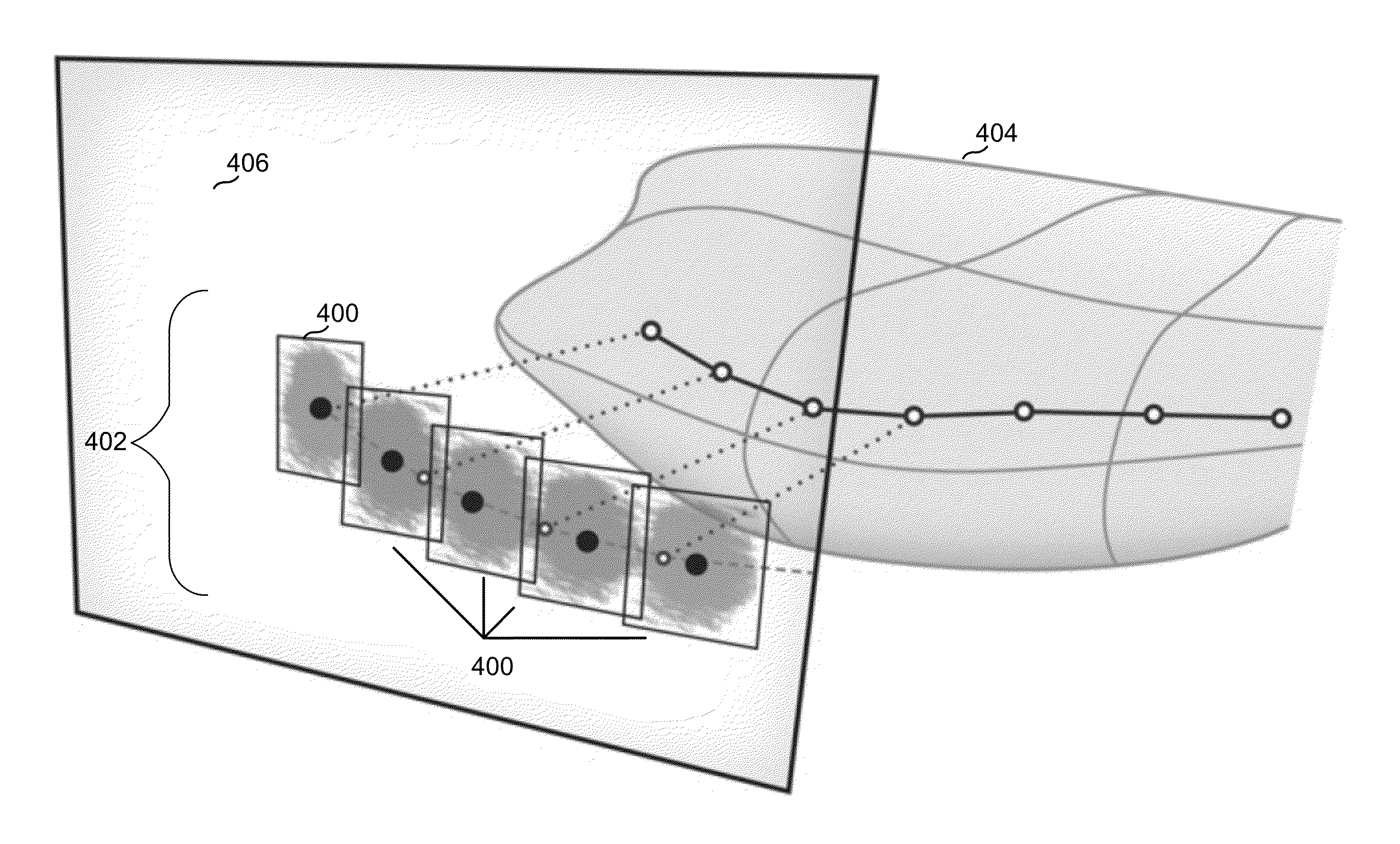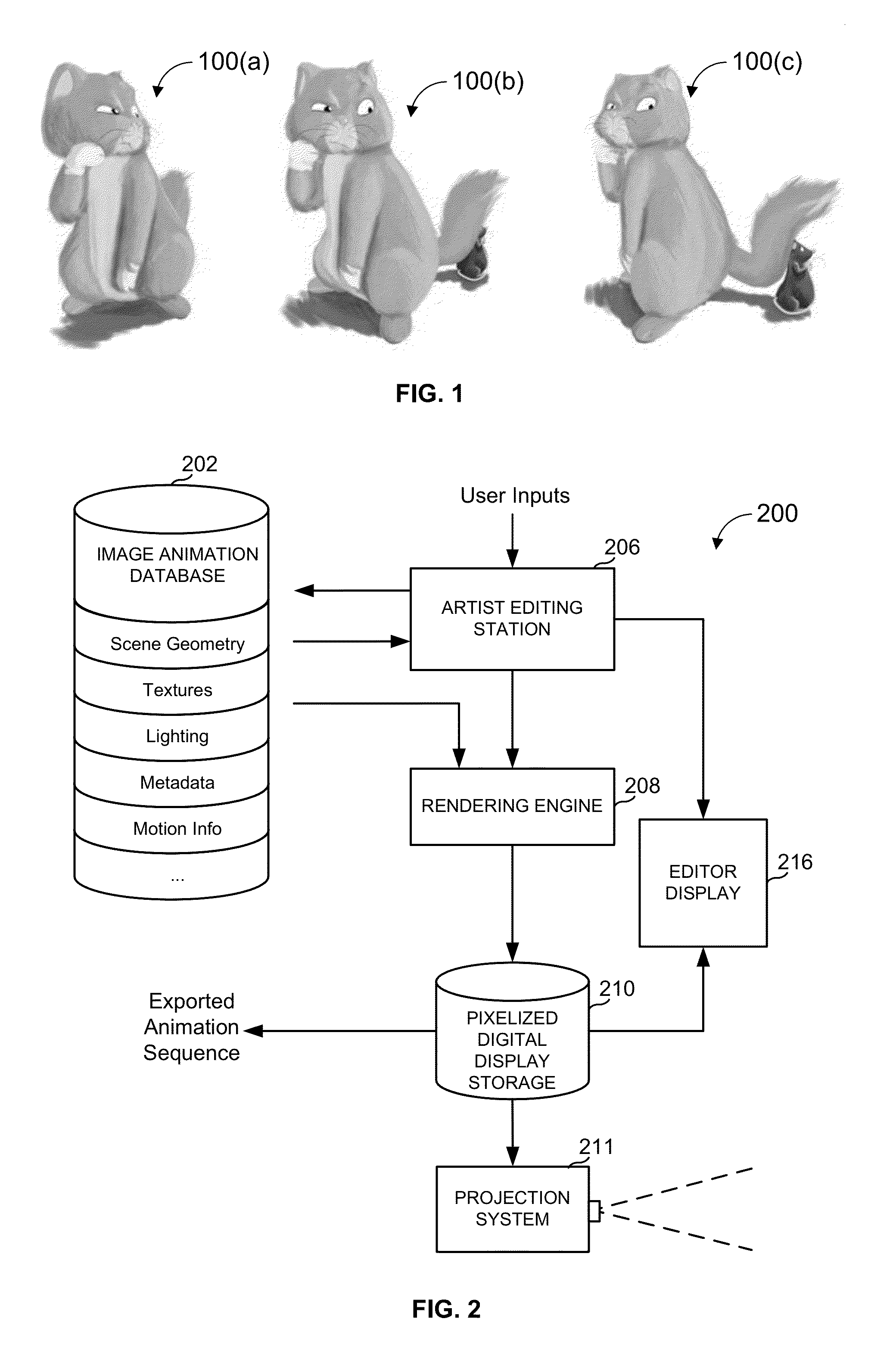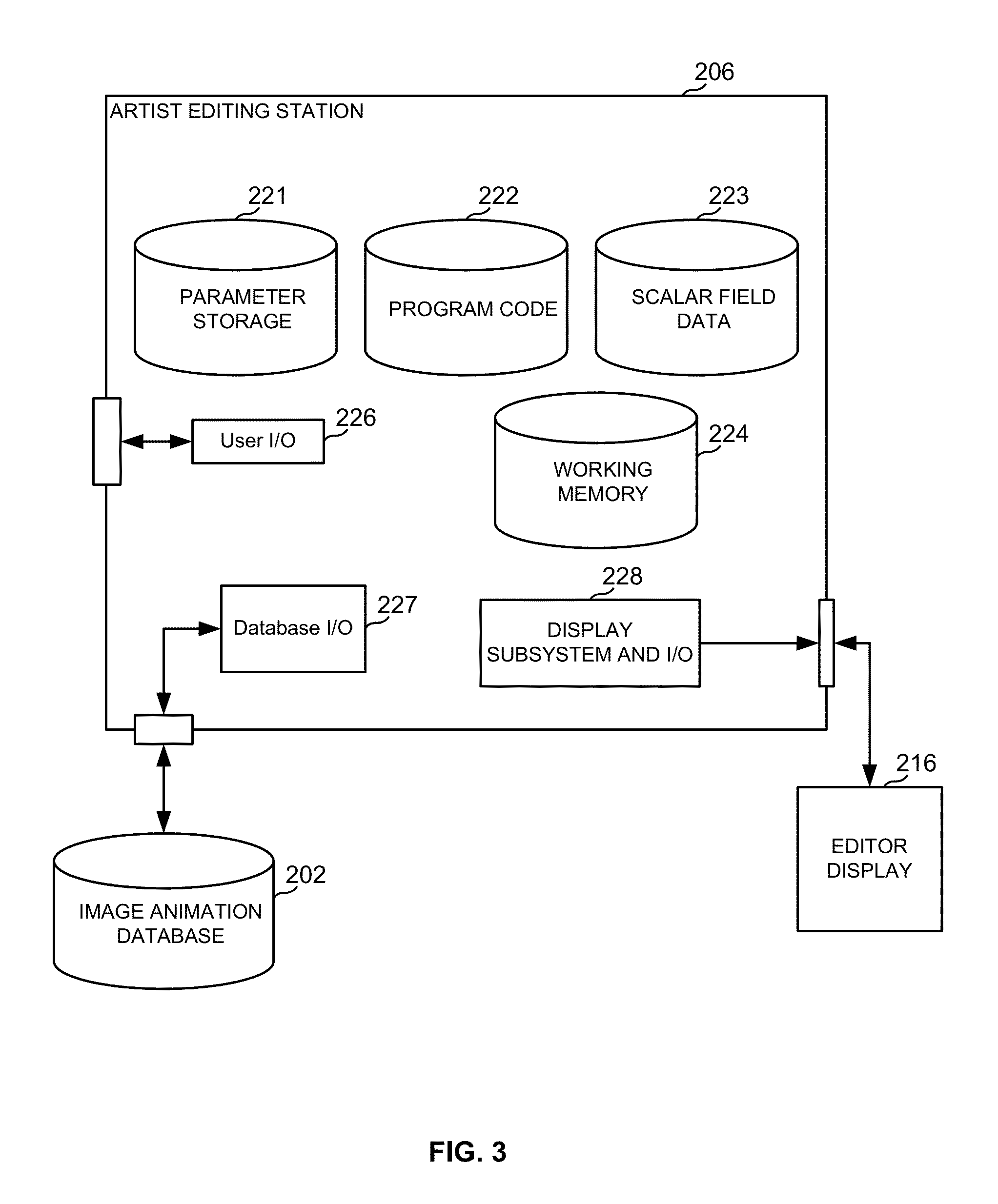3D drawing and painting system with a 3D scalar field
- Summary
- Abstract
- Description
- Claims
- Application Information
AI Technical Summary
Benefits of technology
Problems solved by technology
Method used
Image
Examples
Embodiment Construction
[0067]An improved computer-generated image generation system is described herein. Such a system can be used to create single images or animated sequences of images. In particular, the images are generated from three-dimensional (3D) geometric models. As used herein, a geometric model is a computer-based, electronically readable representation of objects that have positions in a virtual 3D space. The objects can be representations of some physical object or of objects with no physical world counterpart. The objects can be things, light sources, atmospheric effects, and other things that affect a view. Typically, the view is from a camera viewpoint through a view plane, but other variations are possible, such as a view from two points for 3D imagery or a nonplanar view surface. This disclosure is not intended to be limited to any particular process of rendering or image generation from the geometric model.
[0068]Prior to the advent of computers, an artist wishing to paint a particular ...
PUM
 Login to View More
Login to View More Abstract
Description
Claims
Application Information
 Login to View More
Login to View More - R&D
- Intellectual Property
- Life Sciences
- Materials
- Tech Scout
- Unparalleled Data Quality
- Higher Quality Content
- 60% Fewer Hallucinations
Browse by: Latest US Patents, China's latest patents, Technical Efficacy Thesaurus, Application Domain, Technology Topic, Popular Technical Reports.
© 2025 PatSnap. All rights reserved.Legal|Privacy policy|Modern Slavery Act Transparency Statement|Sitemap|About US| Contact US: help@patsnap.com



